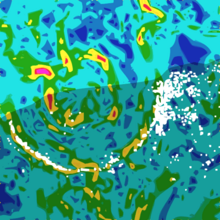Alate_One
Well-known member
There you go again. You made a boatload of actual assertions. Everything I said is based on evidence if you'd like to discuss it.Instead of parading a pile of assertions, how about you take a shot at interpreting the evidence:
There's an assertion, why is it a bird?How did this bird come to be fossilised in the state we found it?
Is this a bird?

How do we know there's water involved by just looking at a fossil sans context?What killed it? How was it flattened? Where did the cementing agent come from? Where did the water go?
What is "all" and how do we know whatever "all" is, happened quickly?How did it all happen so fast?
If you're interested, this is the description of the formations in question.
| The Yixian and Jiufotang Formations are called Lagerstatte, meaning that they have exceptionally good conditions for fossil preservation. The fossils are numerous, but also very well preserved - often including articulated skeletons, soft tissues, color patterns, stomach contents, and twigs with leaves and flowers still attached. Zhonghe Zhou et al.. (2003) deduced two things from this. The first is that the land animals and plants were washed into the lakes very gently, or were already in the lakes when they died. They do not show the damage seen in fossils formed by large floods. Second, volcanic ash is commonly interbedded with lake sediments, and ashfalls seem to have quickly buried the fossilized organisms, created anoxic conditions around them, and prevented scavenging. |
In any case, all of these questions you ask have little or nothing to do with the K-T extinction event and how anything is known about it.



